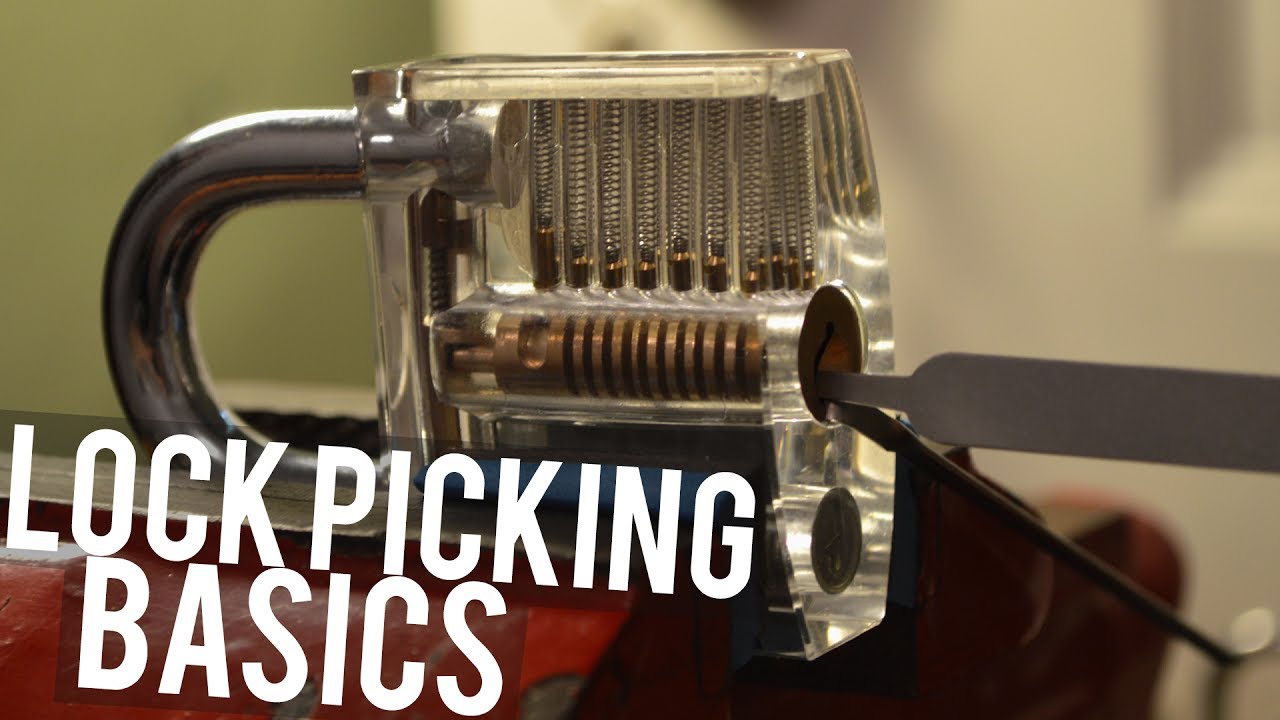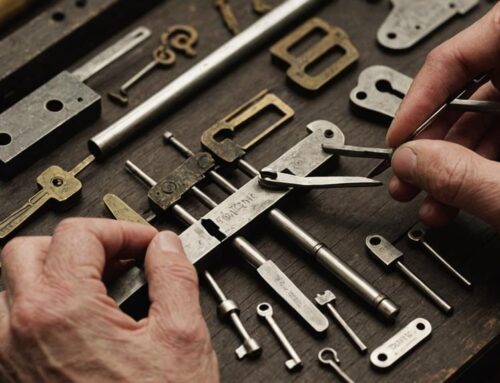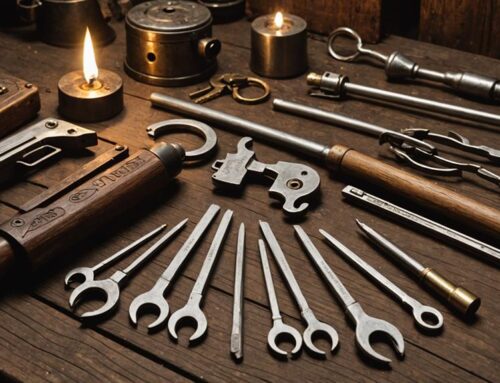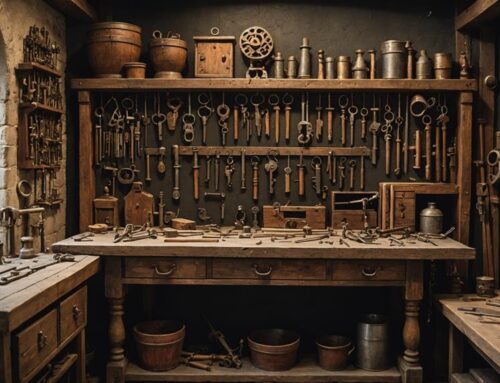You’ve lost your keys again, haven’t you? Don’t fret! With our guide on mastering the art of lock picking, you’ll never be left out in the cold. You’ll learn the tools, techniques, and ethics, turning a frustrating situation into an opportunity. So come along, embrace this new skill, and become part of a community that believes in self-reliance, problem-solving, and ethical practice. Ready to unlock the secrets? Let’s get started!
Key Takeaways
- Preparing and identifying lock picking tools is essential before attempting to pick a lock.
- Understanding the lock mechanism and visualizing it mentally is important when picking a lock.
- Investigating and setting pins requires gentle pressure and the use of a tension wrench and pick.
- Different lock picking techniques, such as raking and individual pin picking, can be used to open a lock.
Understanding the Basics of Lock Picking Tools
Before you dive into lock picking, it’s crucial that you familiarize yourself with the basic tools, as each one serves a unique purpose. Choosing the right lock picking tools for different types of locks is fundamental. A tension wrench, for instance, is essential for applying the necessary pressure to the lock’s plug. Simultaneously, the lock pick and the rake play key roles in manipulating and disengaging the lock mechanism respectively.
Understanding the legality and ethical considerations of lock picking is equally important. Remember, it’s crucial to respect privacy and property rights – lock picking should only be used for legal and ethical purposes, such as unlocking your own property. Joining the lock picking community can help you master these skills, while also fostering a sense of belonging.
Grasping the Inner Workings of Lock Mechanism
Why haven’t you fully grasped the inner workings of lock mechanisms yet? You’re not alone. Visualizing lock mechanisms can be tricky, but it’s a crucial skill for troubleshooting lock picking problems. Let’s break it down:
- Picture the lock as a series of stacked pins. Each pin needs to be lifted to the correct height for the lock to open.
- Imagine these pins as a puzzle that you’re solving one piece at a time.
- Feel for resistance as you gently probe each pin.
- When a pin sets, it should feel subtly different.
This mental image will help you understand why a lock isn’t opening, and guide you as you manipulate each pin. Keep practicing, and soon you’ll feel a sense of belonging in the lock picking community.
Mastering the Art of Setting Pins
Your mastery of setting pins will significantly increase your lock picking skills. Understanding pin positioning is crucial to this process. When you insert your pick into the lock, you’re feeling for the pins. The key is to apply just enough pressure to set the pin at the shear line. Too much force and you’ll overset the pin, too little and it won’t set at all.
Developing a lock picking toolkit is another essential step. A basic kit includes a tension wrench for applying torque and a variety of picks for manipulating the pins.
| Lock Picking Tool | Purpose |
|---|---|
| Tension Wrench | Applies torque |
| Hook Pick | Lifts individual pins |
| Ball Pick | Sets multiple pins |
| Rake | Quickly sets pins |
Employing Effective Lock Picking Techniques
In the world of lock picking, you’ll find that using the right technique can make all the difference. Overcoming common challenges is a skill that comes with practice and patience.
- You can often pick locks using everyday household items:
- A bobby pin can be bent into a makeshift lock pick.
- A flathead screwdriver can serve as a tension wrench.
But remember, finesse is key. Don’t force the lock, as this could damage it. Instead, apply gentle, steady pressure and listen for the subtle clicks as the tumblers fall into place. Practice these techniques and soon you’ll be tackling more complex locks with ease. As part of this community, you’re now privy to the secrets of lock picking. Welcome to the inner circle.
Exploring Advanced Lock Picking Strategies
You’ve mastered the basics of lock picking, and now it’s time to delve into more advanced techniques that’ll require a greater degree of precision and understanding. As part of our community, you’re ready to embark on exploring unconventional techniques, using advanced lock picking tools that push your skills to the next level.
Understanding the intricacies of complex locks is no small feat, but with patience and practice, you’ll be manipulating high-security pins with ease. You’ll need to master tension control and pick placement, while developing a keen sense of touch.
Considering Lock Picking Alternatives and Precautions
While you’re exploring lock picking, it’s also worth considering alternative methods and taking necessary precautions to avoid any potential damage. Your journey in understanding non-destructive entry methods should not only aim at unlocking doors but also embrace the art of belonging. Here’s a handy overview:
- Non-destructive entry methods
- Bump keys: These specifically crafted keys can open most locks rapidly.
- Lock snapping: This involves applying force to break the lock cylinder.
- Understanding legal implications
- Lock picking legality varies globally. Keeping abreast of local laws ensures you’re practicing within legal boundaries.
- Always seek permission before picking a lock that isn’t yours to avoid legal repercussions.
Practicing and Perfecting Your Lock Picking Skills
Don’t underestimate the importance of regular practice to perfect your lock picking skills. Remember, lock picking ethics and legality must always be at the forefront of your hobby. You’re developing a skill, not a tool for mischief. As you practice, you’ll become more adept and intuitive, understanding the delicate dance between tension wrench and pick. You’ll start to appreciate the subtle clicks and shifts, the tactile conversation between your tools and the lock. With every lock you pick, you’re joining a community of hobbyists who value patience, precision, and respect for the craft. It’s not just about unlocking a door; it’s about unlocking a part of yourself that relishes challenge and cherishes growth. So keep practicing, keep learning, and remember – always pick locks responsibly.
Frequently Asked Questions
What Are Some Recommended Lock Picking Sets for Beginners?
You’re stepping into the world of lock picking and need a beginner-friendly set. Explore SouthOrd PXS-14, Sparrows Tuxedo, or Peterson GSP Ghost sets, all offering a variety of tools to master various lock picking techniques.
How Can One Maintain Their Lock Picking Tools to Ensure Longevity?
To maintain your lock picking tools, use tool cleaning techniques like gentle brushing. Don’t overlook proper storage solutions either. A protective case prevents damage, ensuring your tools’ longevity and keeping you in the game.
Are There Any Online Platforms or Communities for People Interested in Learning More About Lock Picking?
Yes, there are numerous online platforms where you can dive into the world of lock picking. Websites like Lock Picking 101 and YouTube channels offer online training resources to master lock picking techniques.
How Can I Practice Lock Picking Legally and Ethically?
You can practice lock picking ethically by only picking locks you own or have permission to pick. Research local lock picking laws and join communities to discuss ethical dilemmas and share best practices.
What Are the Potential Career Paths for Those Skilled in Lock Picking?
You’re a master key, unlocking opportunities. Skilled lock picking can lead to a locksmith certification, adhering strictly to picking ethics. You could work in security, law enforcement, even escape room design. Your talents open doors.









